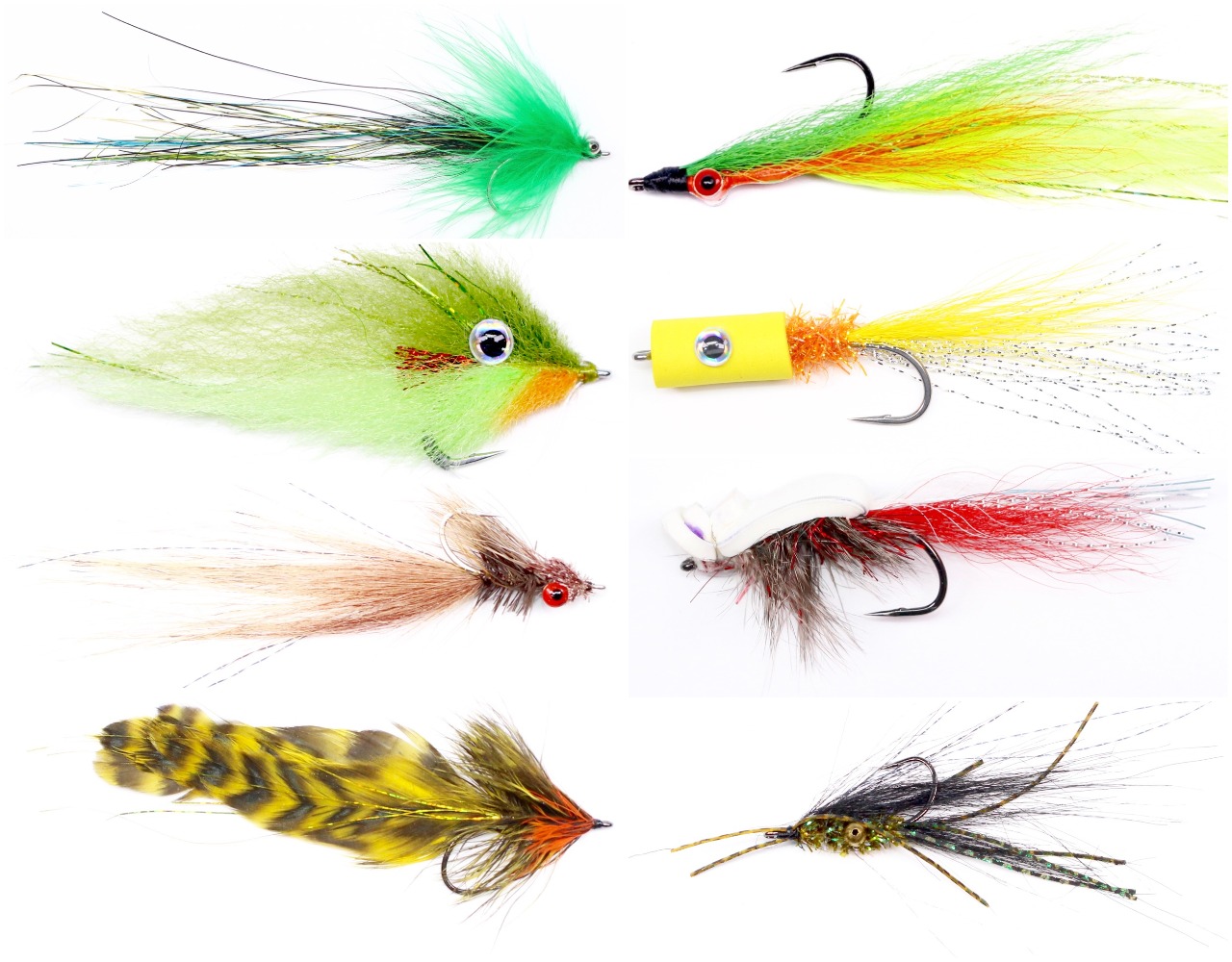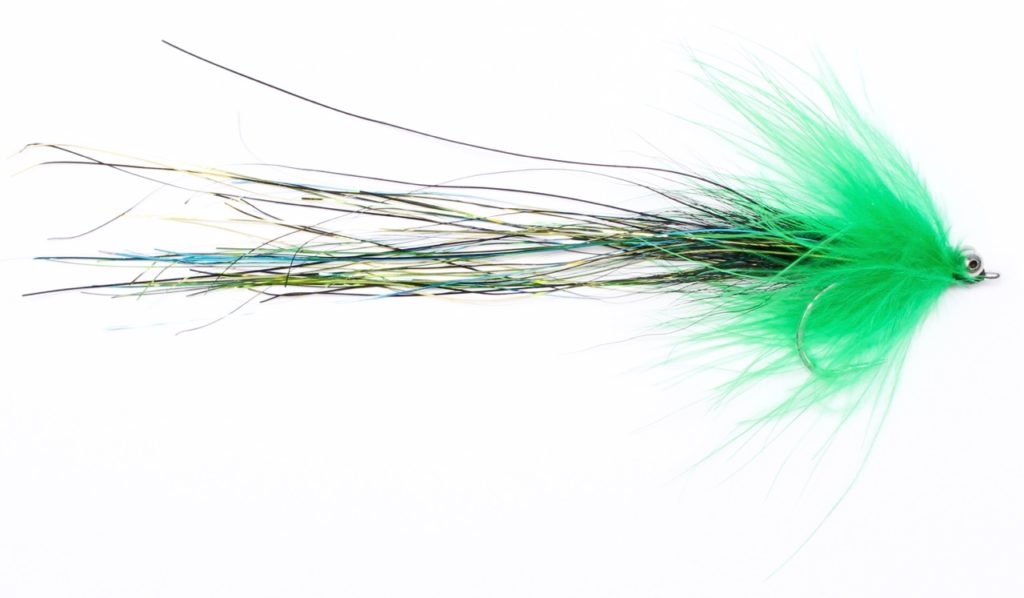HOLD THE SALT
Though designed for ocean fishing, these eight exotic fly patterns are just as deadly on Canada’s freshwater fish
Advertisement
#4 FLASHTAIL WHISTLER
Use this monstrosity when you want a fly that’s slinky and really, really visible. Though developed for the salt, the Whistler may be even better for freshwater fish that like a gaudy mouthful, especially largemouth bass, pike and lake trout. Flashing like a spoon, the voluptuous Flashabou tail flows and ripples more seductively than any soft-plastic, while the collar suggests volume and the bead chain produces both vibration and an erratic swimming action. Yet despite that bling and profile, it’s still almost weightless, making it easy to cast.
Advertisement
The original pattern has a few extra frills, but I favour my own stripped down version, which is more durable and (in my experience, at least) fishes just as well. The tail is usually gold or silver, but red, pearl, green, black or a blend are all excellent choices. Just firmly sandwich the Flashabou between the bucktail layers to keep the long tinsel from tangling in the hook. Marabou (pictured) makes a floofy body, while schlappen is sleeker, but neither stands up well to teeth. For a truly indestructible Whistler, collar it with a streamer brush—a blend of synthetic fibres twisted into a fine wire that’s wrapped around the hook, just like a hackle.
- HOOK: Gamakatsu SC15 or similar, sizes 1/0 to 3/0
- TAIL: Bucktail 1 to 2 times length of hook; 15 to 30 Flashabou strands, 2 to 4 times length of hook; second layer of bucktail
- BODY: Palmered marabou, schlappen or EP Craft Fur brush
- EYE: Large bead chain
- DIFFICULTY: Easy


